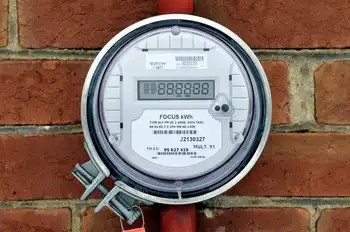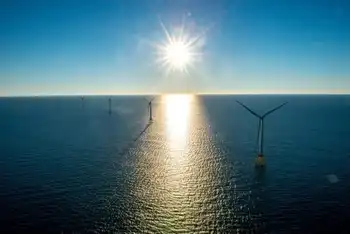Corzine wants to triple New Jersey power goals by 2020
By Press of Atlantic City
Substation Relay Protection Training
Our customized live online or in‑person group training can be delivered to your staff at your location.

- Live Online
- 12 hours Instructor-led
- Group Training Available
Gov. Jon Corzine says the Garden State is tripling the amount of wind power it plans to use by 2020 to 3,000 megawatts. That would be 13 percent of New Jersey's total energy, enough to power between 800,000 to just under 1 million homes.
New Jersey's original plans called for 1,000 megawatts of wind energy by 2020. But Corzine thinks the state needs to take better advantage of wind energy sooner than that.
"We want to create this generation's race to the moon, but this time, a race to the sea, to harness this potential wind source off of our coasts, and bring economic development, environmental benefits, and new, green jobs to the Garden State," Corzine said.
Garden State Offshore Energy, a joint venture of PSE&G Renewable Generation and Deepwater Wind, was recently chosen to build a $1 billion, 345 megawatt wind farm in the ocean about 16 miles southeast of Atlantic City.
That plant would be able to power about 125,000 homes.
"We believe that offshore wind has great potential to bring clean energy and jobs to New Jersey," said Ralph Izzo, president of PSE&G.
There are currently no offshore wind power projects anywhere in the United States, but two others have been approved for areas off Rhode Island and Delaware, environmentalists said.
In Atlantic City, the local utilities authority has a wind farm consisting of five wind turbines that generate 7.5 megawatts, enough energy to power approximately 2,500 homes. It powers a wastewater treatment plant, with surplus energy going to the area power grid.
The New Jersey Board of Public Utilities voted to award a $4 million grant to Garden State Offshore Energy. Construction could begin in 2010 after the necessary state and federal permits are obtained.
The state Commerce Commission assessed the potential costs and benefits of offshore wind on New Jersey's economy. It concluded that tourism impacts decline the further the wind turbines are located from the shore. It also concluded that while there would be some negative impacts on tourism, these would be temporary and would decline quickly.
Environmentalists hailed the plan. Dena Mottola Jaborska, executive director of Environment New Jersey, termed it "a gale force for change, moving us away from dirty power and towards a new energy future. It is the most visionary plan to promote offshore wind energy in the nation."
To put the New Jersey plan in perspective, she said there are currently 10 small-scale offshore wind farms worldwide with a combined generating capacity of 587 megawatts. Another 3,000 megawatts are being planned for projects across Europe, she said.
"This is a historic day for New Jersey," added Jeff Tittel, executive director of the New Jersey chapter of the Sierra Club. "Global warming is the single most serious threat to the planet, and offshore wind energy is the most cost-effective form or renewable alternative energy."
Corzine said the project could create as many as 500 new jobs, with twice that amount during construction and installation of the giant turbines.
Garden State Offshore Energy was one of five firms competing to do the project. But Corzine wants the others to also work with the state on their own proposals. One of them, Bluewater Wind, plans to build a similar project about 13 miles off the coast of Rehoboth Beach, Del., said Jim Lanard, the company's director of strategic planning. He said Bluewater is interested in working with New Jersey on another wind energy project.
He also said swimmers and sunbathers would hardly be able to see the giant turbines from the beach.
"These things will appear to be half the size of your thumbnail and as thin as a toothpick," he said.











